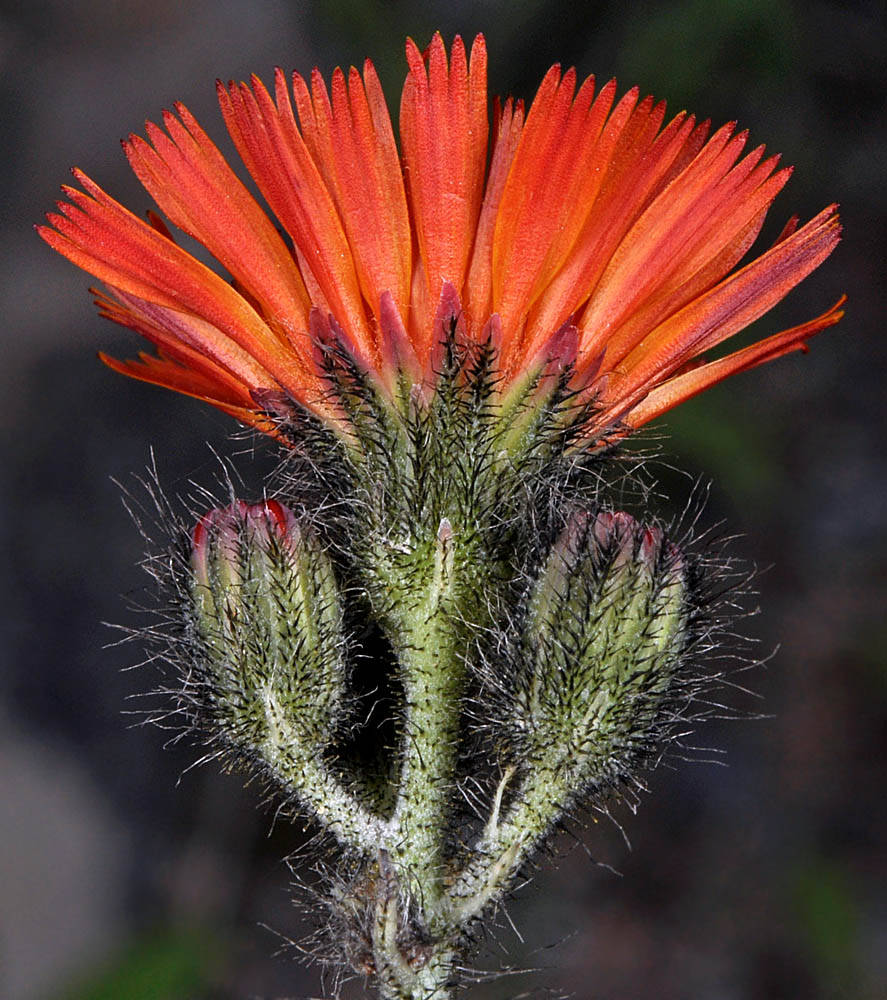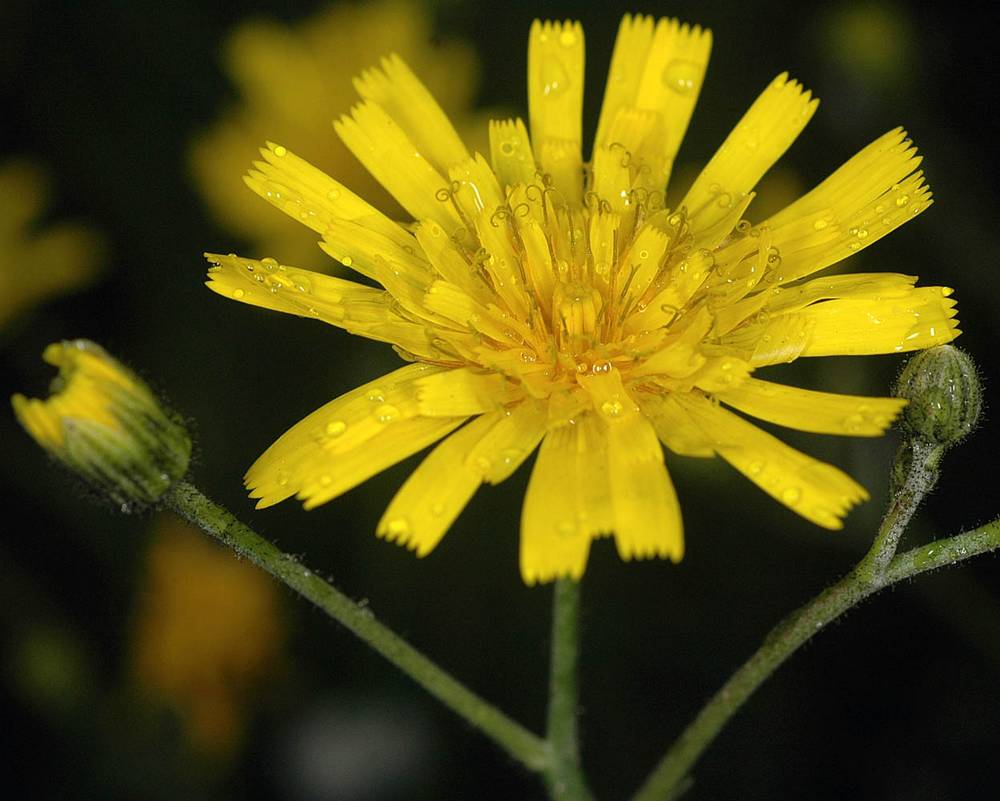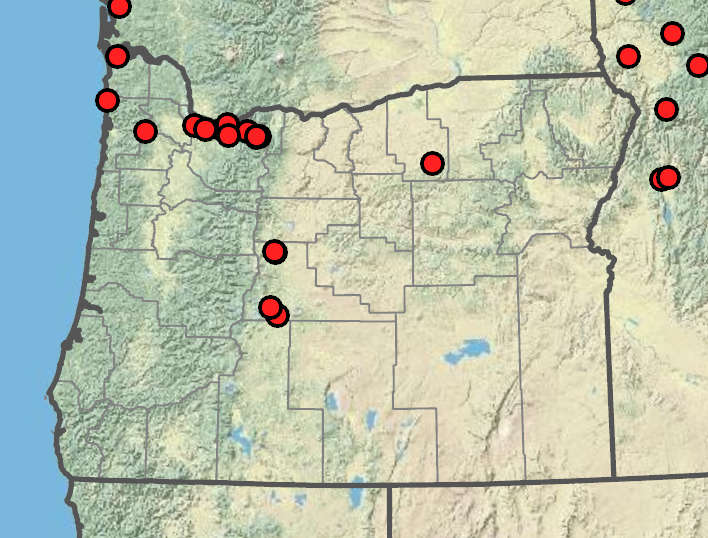Hieracium aurantiacum
Hieracium lachenalii
devil's paintbrush, king-devil, orange hawkweed
Lachenal's hawkweed
erect; simple, pilose-hispid, usually also stipitate-glandular, tomentulose distally.
simple or branched, usually tomentulose or spiculate-glandular.
basal, sometimes 1 near stem base, oblanceolate, 5–20 cm;
margins entire;
tips acute or obtuse;
surfaces pilose-setose;
petioles short, winged.
basal and cauline, or sometimes cauline, broadly elliptic, 5–10 cm, bases tapered;
margins dentate; lower strongly toothed;
surfaces glabrous or lightly pilose;
basal petiolate;
cauline petiolate or sessile.
raceme- or panicle-like arrays, bracteate or not.
panicle- or raceme-like arrays, bracteate or not.
campanulate in flower; ovoid in fruit, 6–8 mm.
campanulate in flower; ovoid in fruit, 7–10 mm.
25–100+;
ligules 10–15 mm; reddish orange, drying purplish.
40–80+;
ligules 13–18 mm, yellow.
linear-lanceolate;
surfaces blackish stipitate-glandular, usually setose-hispid; inner 13–30; outer > inner.
linear-lanceolate;
surfaces black stipitate-glandular, sometimes tomentulose; inner 14–20+; outer gradually shorter.
columnar, 1.2–2 mm, dark brown.
columnar, 2.5–3 mm; black.
=18, 27, 36, 45, 54, 63, 72.
=27.
Hieracium aurantiacum
Hieracium lachenalii
Disturbed areas, roadsides, clearcuts, riverbanks, pastures. Flowering Jun–Aug. 100–1400 m. BW, Casc, CR, ECas. CA, ID, NV, WA; scattered in North America; Europe. Exotic.
Hieracium aurantiacum is a conspicuous and well-known weed over much of the United States and southern Canada. Its scattered distribution in Oregon indicates an ability to disperse by seed, and once established it may persist and spread by both seeds and stolons.
Disturbed areas, roadsides. Flowering Jun–Aug. 0–1400 m. Casc, WV. WA; sparsely scattered in North America; Europe. Exotic.
Plants of H. lachenalii produce abundant fruits, probably by apomixis since its chromosome number is triploid.
Kenton Chambers
Kenton Chambers
- Local floras:
BC,
OR,
WA
- Local Web sites:
Flora NW,
PNW Herbaria
WildflowerSearch
iNaturalist (observations)
USDA Plants Database
- LBJ Wildflower Center
- SEINet
- Plants of the World Online
- Encyclopedia of Life
- Wikipedia
- Google Image Search





